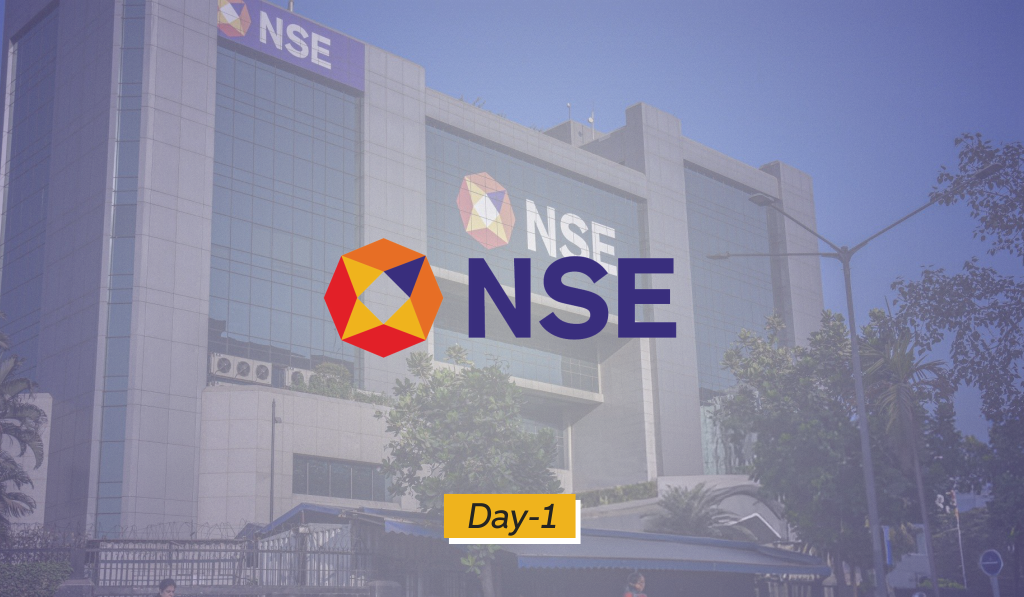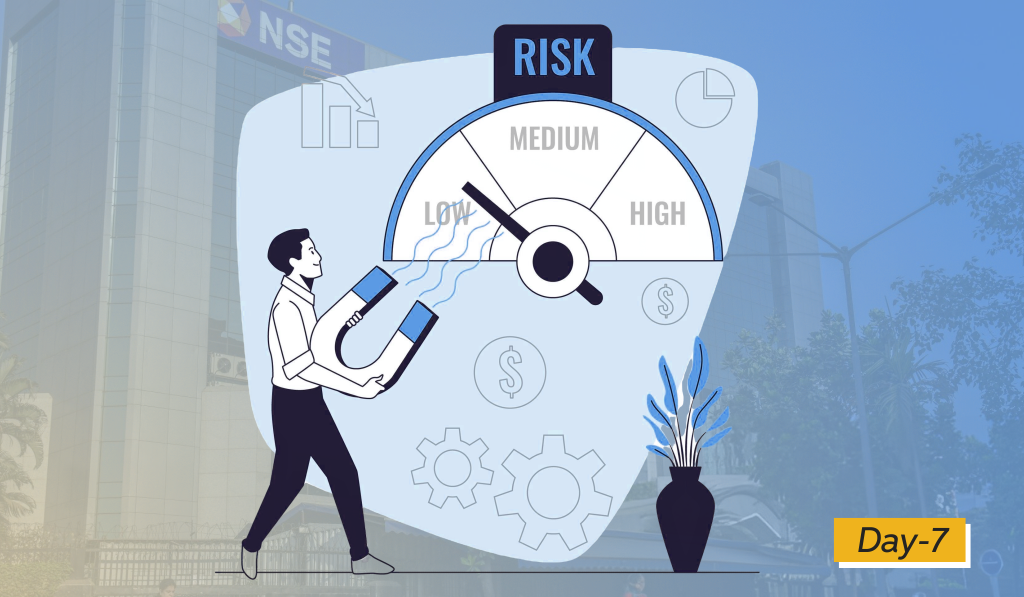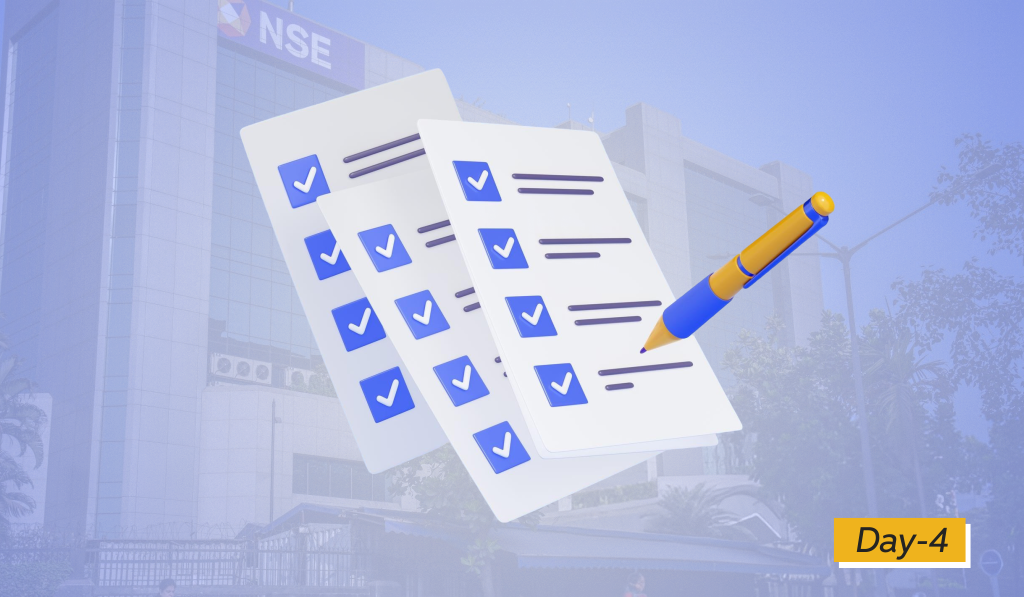What Is NSE India ?
For anyone starting in the financial markets, NSE provides a well-regulated and technologically advanced environment for investing and trading. The National Stock Exchange of India Limited (NSE) is one of India’s largest and most advanced stock exchanges. It has played a pivotal role in modernizing India’s financial markets. NSE is one of the largest stock exchanges globally by market capitalization and trading volume.
You often hear about the BSE alongside the NSE, as they are the two most prominent stock exchanges in India.
The NSE (National Stock Exchange) and BSE (Bombay Stock Exchange) are two major stock exchanges in India where stocks, bonds, and other securities are bought and sold. The NSE is known for its modern electronic trading system and is the largest by trading volume, while the BSE is the oldest exchange in Asia, known for its historical significance and the Sensex index.
Both operates under the jurisdiction of the Securities and Exchange Board of India (SEBI), ensuring fair practices and investor protection.
The National Stock Exchange (NSE) is a marketplace where people buy and sell shares of companies and other financial products. Let’s break it down step-by-step for someone just starting out:
What Happens at NSE?
- Buying and Selling Shares:
- Investors and traders come to the NSE to trade shares of companies.
- Prices of shares go up or down depending on supply and demand. For example, if many people want to buy a company’s shares, the price will increase.
- Other Financial Products:
- Besides shares, people can trade bonds (debt securities) and derivatives (futures and options). We’ll Discuss more about this in upcoming articles.
- Investments:
- Individuals invest their money to grow it over time, while companies use the money they raise for expansion and other needs.
- Smooth Transactions:
- After a trade is completed, the exchange ensures that shares and money are exchanged properly and securely through a process called clearing and settlement.
- After a trade is completed, the exchange ensures that shares and money are exchanged properly and securely through a process called clearing and settlement.
How Does NSE Work?
- Electronic Platform:
- NSE operates entirely online. Investors place buy or sell orders through brokers or trading apps.
- The system matches buyers with sellers automatically.
- Market Timings:
- You can trade on NSE from 9:15 AM to 3:30 PM (Monday to Friday).
- Participants:
- Investors: People who buy shares to hold long-term.
- Traders: People who buy and sell frequently to earn quick profits.
- Brokers: Licensed intermediaries who help investors trade.
- Price Discovery:
- The platform ensures real-time updates of stock prices based on demand and supply.
Why Do Companies List on NSE?
- Raise Money:
- Companies need funds for growth, new projects, or paying off debts. Listing on NSE helps them raise this money from investors.
- Increase Visibility:
- Being listed on NSE improves a company’s reputation and makes it more attractive to potential investors and partners.
- Liquidity:
- Listing allows existing shareholders to sell their shares whenever they need cash.
- Better Valuation:
- The market decides the company’s value based on its share price. A higher valuation can attract more investments.
- Nifty 50:
- It is the flagship index of NSE, representing the top 50 companies across various sectors.
- It helps investors track the overall performance of the stock market.
- Sensex:
- This is the index of the Bombay Stock Exchange (BSE), consisting of 30 top companies. Like Nifty, it is used to gauge market trends but is specific to BSE.
- Bank Nifty:
- This index tracks the performance of the top banking stocks listed on NSE.
- It’s useful for investors focused on the banking sector.
- Midcap Index:
- This tracks medium-sized companies that are neither too large nor too small.
- Midcap stocks can offer high growth potential but also come with higher risks compared to large-cap stocks (like those in Nifty 50).
How Many Types of Indices Are There and What Are They?
- Broad Market Indices:
- Examples: Nifty 50, Nifty 100, Sensex etc.
- These indices represent the performance of a large section of the stock market, making them a benchmark for overall market trends.
- Sectoral Indices:
- Examples: Bank Nifty, Nifty IT, Nifty Pharma etc.
- These indices track the performance of specific sectors like banking, technology, or pharmaceuticals.
- Market Cap-Based Indices:
- Examples: Nifty Midcap, Nifty Small cap, Nifty Largecap.
- These indices group companies based on their market capitalization.
- Thematic Indices:
- Examples: Nifty ESG, Nifty Infrastructure etc.
- These focus on themes like environmental sustainability or infrastructure.
- Strategy Indices:
- Examples: Nifty Alpha, Nifty High Beta.
- These indices track stocks based on specific investment strategies or factors like high returns or volatility.
What is Zerodha, Dhan, Angel Broking, Fyers, etc.?
- What Are They?
- These are stockbrokers or trading platforms that help individuals invest in the stock market.
- They act as intermediaries between the investor and the stock exchange (like NSE or BSE).
- Key Features:
- Zerodha: Known for its low brokerage charges and user-friendly interface. It is one of the largest brokers in India.
- Dhan: A newer platform with modern features like advanced charting tools for traders.
- Angel Broking: A well-established broker offering a wide range of financial services, including advisory.
- Fyers: Focused on traders, providing robust tools and detailed analytics.
- How They Work:
- You open a Demat and trading account with these brokers.
- They provide a platform (web or app) where you can place buy/sell orders for stocks, mutual funds, ETFs, etc.
- They charge a small fee (brokerage) for each trade.
- Why Use Them?:
- They simplify the process of investing in the stock market.
- They provide tools for tracking and analyzing stocks.
- Many offer educational resources for beginners.
Ending Note
This article is just the starting point of our journey into the stock market. We have tried to touch on almost all the key topics in the simplest way possible to help you get started. Stay tuned for more articles as we continue this journey together.
Our goal is to master the stock market in 100 days. This is Day 1 — let’s make it count!
We’ll gradually explore all topics and aim to master every aspect of trading and investing. Remember:
“The stock market is a device for transferring money from the impatient to the patient.” — Warren Buffett
Stay consistent, stay curious, and see you in the next article!










